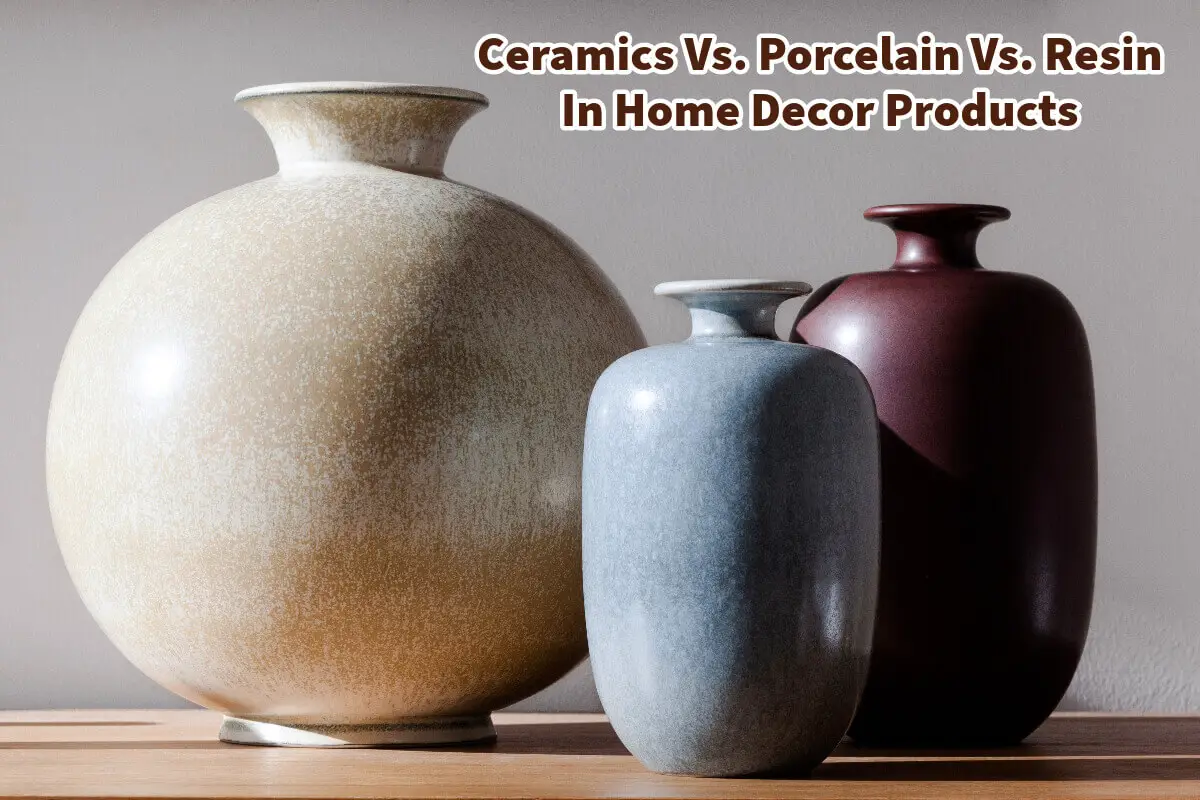As we explore options for developing home decor products, three primary materials often come to the forefront: ceramic, porcelain, and resin. While they may share some similarities, each possesses unique characteristics that make them suitable for specific items.
Due to its versatility and ease of use, ceramic is a popular choice for various products, including vases and figurines. Resin offers the flexibility to create intricate shapes and designs, while porcelain, a high-fired material, excels in specific, often more luxurious applications. Continue reading as we delve deeper into each material’s advantages and best uses for high-quality home decor.
Table of Contents
- Ceramic Vs. Porcelain Vs. Resin: Navigating The World Of Home Decor Accessories
- Ceramic: The Versatile Choice
- Porcelain: The Elegant Alternative
- Comparing Ceramic And Porcelain In Home Decor
- Adding Resin To The Mix Of Ceramic Vs. Porcelain
- Ceramic Vs. Resin In Home Decor
- Making Your Choice Between Ceramic, Porcelain, And Resin
- Sustainability And Environmental Impact
- Maintenance And Longevity Of Each Material Type
- Practical Applications In Home Decor Items
- Related Content
Ceramic Vs. Porcelain Vs. Resin: Navigating The World Of Home Decor Accessories
Home decor is an evolving landscape of styles, materials, and ideas. Among the many materials, ceramics, porcelain, and resin are prominent. Each of these materials offers unique characteristics that can significantly impact your home decor items’ look, feel, and longevity.
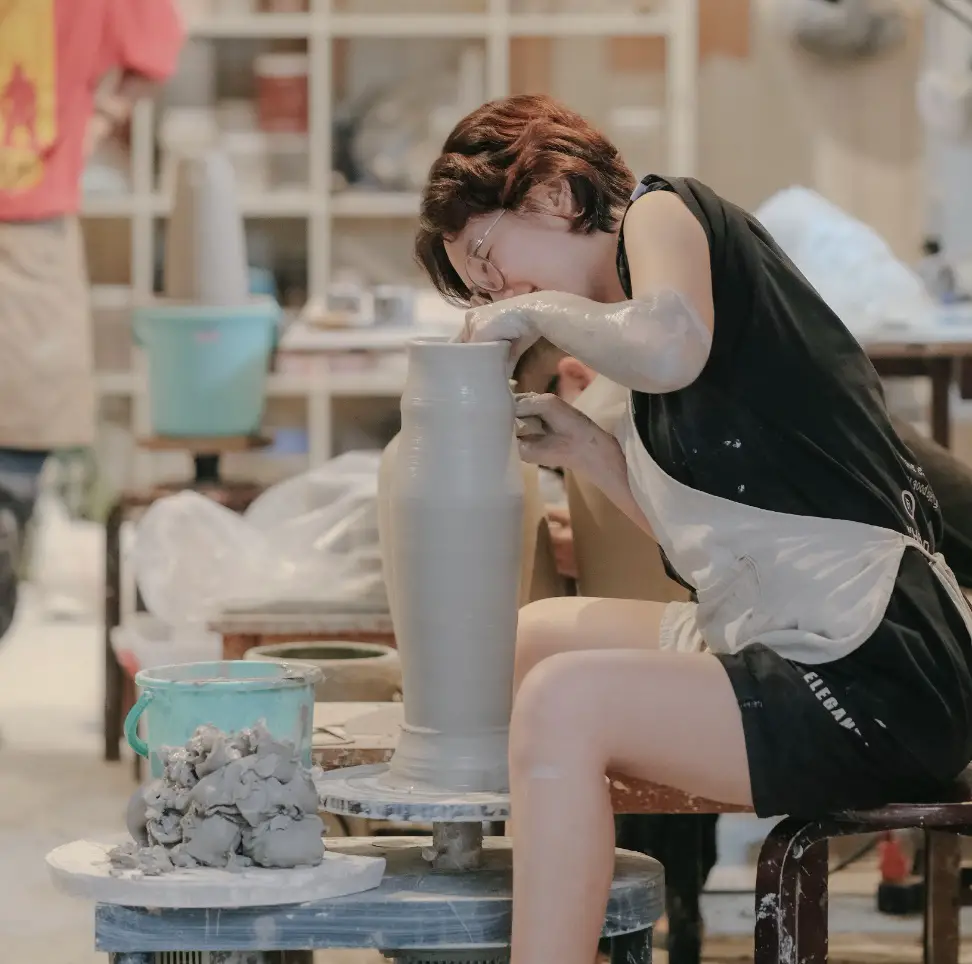
This comprehensive guide will explore the pros, cons, and properties of ceramics, porcelain, and resin, extending beyond figurines to encompass a range of home decor products.
Ceramic: The Versatile Choice
What Is Ceramic?
Ceramic is a collective term that describes a wide range of products made primarily from a mixture of clay, water, and sand. The raw material is shaped and then air-dried or fired in a kiln.
Ceramics are often glazed and painted to enhance their durability and aesthetic appeal.
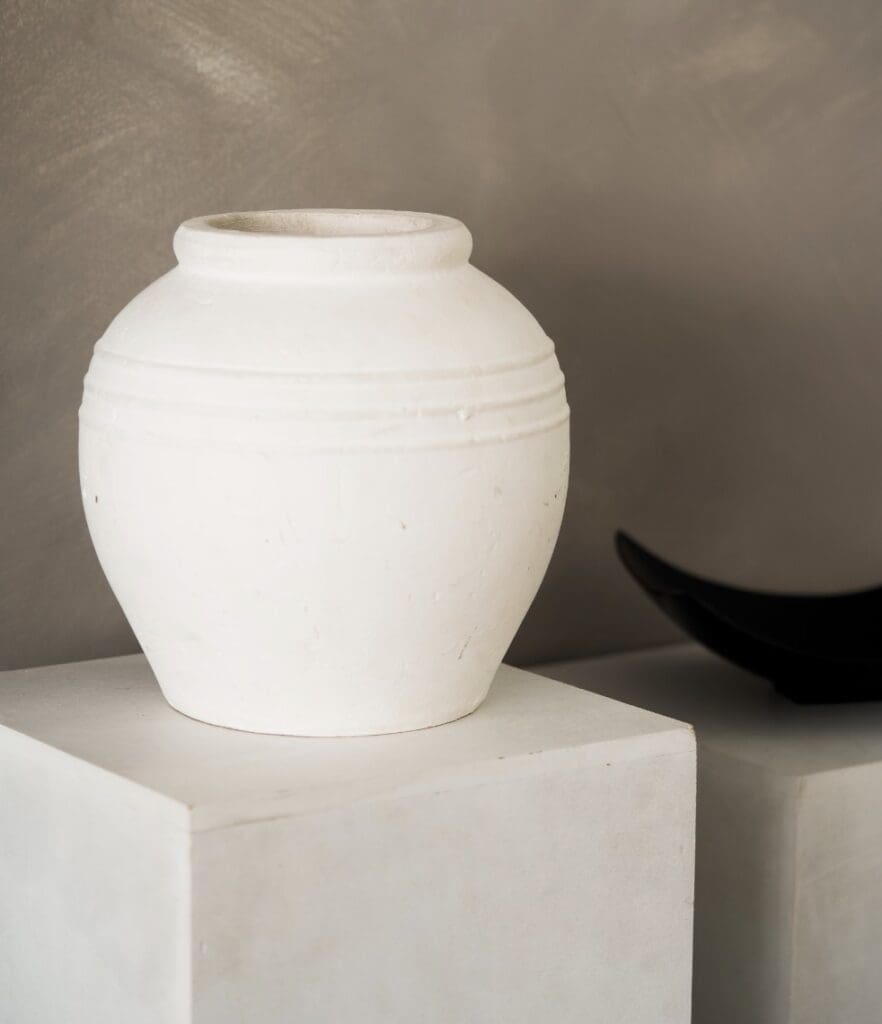
Properties Of Ceramic
- Durability: Once glazed, ceramic is relatively robust against moderate impacts but less tough than porcelain.
- Absorbency: Unprotected ceramics are porous and absorb water, necessitating a glaze for water resistance.
- Color Variety: Ceramics are often painted and come in various colors.
- Ease of Crafting: Ceramic materials are generally easier to shape than porcelain, making them a more accessible medium for artists and manufacturers.
Ceramic In Home Decor
Ceramics can be used in many applications, including vases, planters, tableware, wall art, and lighting fixtures. Its versatility, range of colors, and relatively low cost make ceramic famous in various styles and settings.
Porcelain: The Elegant Alternative
What Is Porcelain?
Porcelain, often called ‘china,’ is a high-firing ceramic traditionally made from kaolin clay and petuntse. It requires extremely high temperatures (between 1250 to 1450 degrees Celsius) for firing, resulting in a more refined, glass-like texture.
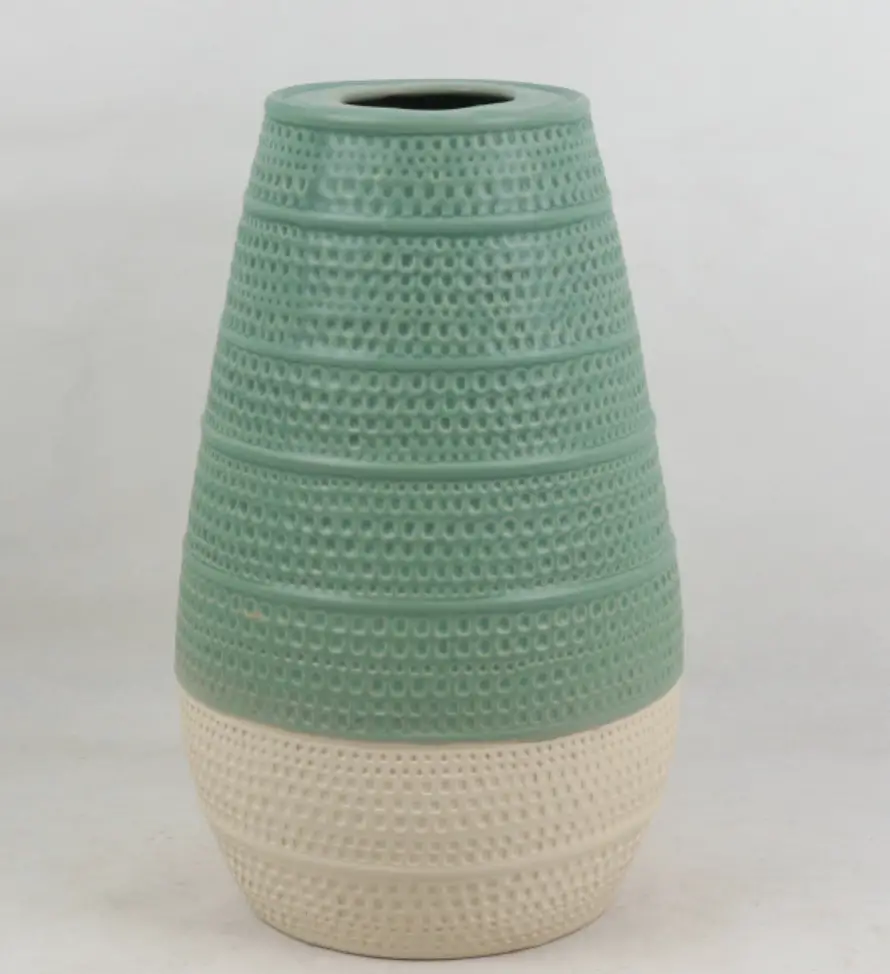
Properties Of Porcelain
- Hardness: Porcelain is more complex than ceramic and, therefore, more durable.
- Non-Porous: Unlike ceramic, porcelain is non-porous, meaning it doesn’t need a protective glaze.
- Fine Texture: The smooth porcelain texture adds to its aesthetic appeal.
- Limited Color Range: Porcelain’s natural color is a milky white, and though it can be painted, it’s usually less colorful than ceramic.
Porcelain In Home Decor
Porcelain is often used for elegant and intricate pieces like fine tableware, ornate vases, and luxurious bathroom fixtures. Its smooth texture and natural elegance make it highly desirable for upscale, traditional interiors.
Comparing Ceramic And Porcelain In Home Decor
Here are some essential differences that can influence your choice between ceramic and porcelain:
- Durability: Porcelain wins in terms of durability but is more challenging to shape and produce.
- Cost: Ceramic items tend to be more budget-friendly due to the lower cost of production.
- Style: Porcelain is often seen as more elegant and refined, whereas ceramic offers rustic charm and versatility.
- Usage: Ceramic is ideal for casual settings and everyday use, whereas porcelain is better suited for formal occasions and luxurious decor.
Adding Resin To The Mix Of Ceramic Vs. Porcelain
Resin is a composite blend of organic compounds that harden into a durable, plastic-like material. Resin is often famous for modern designs due to its versatility, durability, and lighter weight.
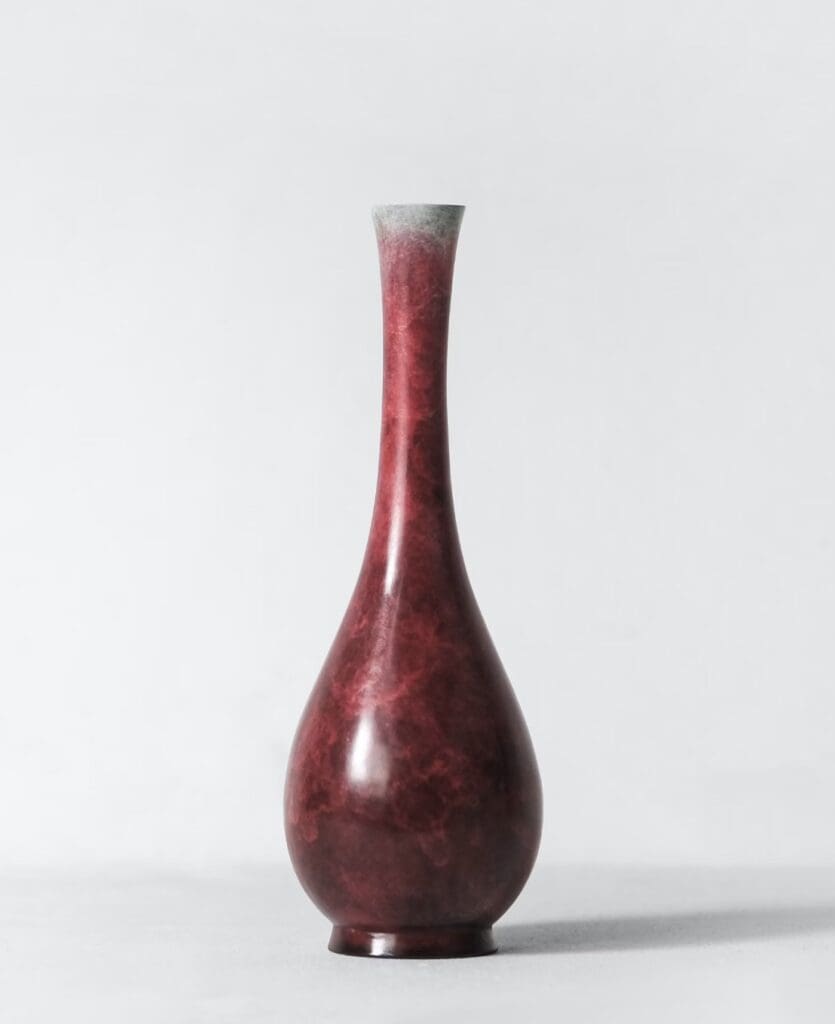
Properties Of Resin
- Flexibility: Easy to shape and mold, allowing for more intricate designs.
- Lightweight: Ideal for wall hangings and items that require ease of movement.
- Cost: Generally more affordable than both ceramic and porcelain.
Resin In Home Decor
Resin is widely used for wall art, small sculptures, and furniture. Its ability to mimic other materials like wood, metal, and even stone makes it a versatile choice for contemporary homes.
Ceramic Vs. Resin In Home Decor
While ceramics offer a classic appeal and come from natural materials, resin provides modern aesthetics and is easier to shape and produce. Resin is also more cost-effective but may not offer the same environmental benefits as ceramic.
Making Your Choice Between Ceramic, Porcelain, And Resin
Choosing between ceramic, porcelain, and resin comes down to your specific needs, decor style, and budget:
- For a timeless, classic appeal and versatility, ceramics are your go-to.
- If you prefer something elegant, durable, and willing to invest more, porcelain could be the best fit.
- Resin is a commendable option for contemporary designs, cost-effectiveness, and ease of maintenance.
Each material has unique properties that make it suitable for different applications in home decor. Understanding these can help you make a choice that not only enhances the aesthetic appeal of your space but also provides longevity and value for money.
Sustainability And Environmental Impact
In today’s world, where sustainability is a growing concern, it’s worth considering the environmental impact of your material choices:
- Ceramic: This material is often made from naturally occurring substances like clay, and many ceramics can be recycled or are biodegradable. If sustainability concerns you, ceramics may be the way to go.
- Porcelain: While also made from natural materials, the high-temperature firing process can be energy-intensive. However, its durability might mean a longer lifespan, reducing the need for frequent replacements.
- Resin: Typically synthetic, wax is not biodegradable and can be less eco-friendly than ceramic and porcelain. However, some forms of resin are made from renewable resources, so you can look for those options if sustainability is your priority.
Maintenance And Longevity Of Each Material Type
Regardless of the material you choose, maintenance will play a role in how your decor looks over time:
- Ceramic: Generally easy to clean, ceramics are often dishwasher safe and can be wiped down with a damp cloth. However, they can chip or crack if not handled carefully.
- Porcelain: Also easy to clean and often dishwasher safe, porcelain’s more robust nature means it is less prone to chipping or cracking.
- Resin: Most resin products can be easily cleaned with a damp cloth. However, they may be susceptible to scratching and are generally less heat-resistant than ceramic and porcelain, limiting their use in specific applications.
Practical Applications In Home Decor Items
Let’s take some everyday home decor items and discuss which material might be best suited for each:
Table Lamps
- Ceramic: Offers a rustic or traditional look and is generally more budget-friendly.
- Porcelain: Provides an elegant and classic aesthetic, often at a higher price point.
- Resin: Suitable for modern designs and offers the most comprehensive range of shapes and colors.
Coasters
- Ceramic: Durable and heavy, less likely to stick to the bottom of a wet glass.
- Porcelain: Similar benefits to ceramic but often comes in more elegant designs.
- Resin: Lightweight and modern but may not be as durable as ceramic or porcelain.
Picture Frames
- Ceramic: Offers a traditional look and feel but can be heavy, especially for larger frames.
- Porcelain: Provides a luxurious touch but at a higher cost.
- Resin: Light and easy to hang, available in various designs and colors, and generally more affordable.
Home decor is vast and varied, and the material you choose—ceramic, porcelain, or resin—will set the tone for your space.
Ceramics offer various applications and styles, from rustic to modern, at a lower price point. Porcelain adds elegance and luxury but often comes with a higher cost. Resin is versatile and modern, ideal for those who like to keep up with trends without breaking the bank.
When making your choice, consider not just the aesthetic and cost but also the material’s practicality, durability, and environmental impact. Armed with this knowledge, you can make a more informed decision, ensuring that the home decor items you choose will be ones you love for years.
We would love to talk to you if you want to see how we can help you with any of your ceramic production.
Find out more about how Mondoro can help you create, develop, and manufacture excellent home decor and furniture products – don’t hesitate to contact me, Anita. Check out my email by clicking here or become a part of our community and join our newsletter by clicking here.
Mondoro gives out a FREE Lookbook to anyone interested. You can receive a copy of our latest Lookbook by clicking here.
Listen to our Podcast called Global Trade Gal. You can find it on all major podcast platforms. Try out listening to one of our podcasts by clicking here.
Subscribe to our Mondoro Company Limited YouTube Channel with great videos and information by clicking here.
Related Content
What is the Standard Light Bulb Base? Different E -Socket Types
It can get quite confusing when considering different types of light bulb socket bases. Many people get confused about the other numbers used for each light bulb base and their meanings.
You can learn more by reading What is the Standard Light Bulb Base? Different E -Socket Typesourcing is Explained by clicking here.
Selling Lamps Online, Understanding Listings And Liability
To sell a lamp to most countries, the lamp must be up to that country’s standard. Many places will not even allow a lamp to be imported if the lamp does not have the proper electrical components and prototypes. Lamps should be UL or ETL listed to be sold in the United States for the US market.
You can learn more by reading Selling Lamps Online, Understanding Listings and Liability by clicking here.
Rattan Vs. Bamboo – The Differences Between The Materials Explained
Rattan and bamboo are not the same material, as they have different characteristics and uses. For example, bamboo is hollow and grows straight as a tree would. Rattan is a solid material easily bent and grows in rainforests as a vine.
You can learn more by reading our blog, Rattan Vs. Bamboo – The Differences Between the Materials Explained, by clicking here.

